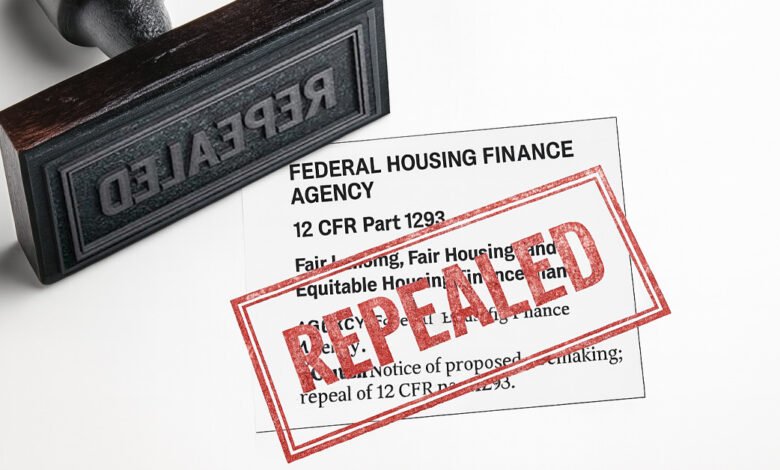Shockwaves Hit as FHFA Targets Fair Lending & Housing Equality: Could You Be Affected?

Understanding the FHFA’s Move to Repeal the Fair Lending and Equitable Housing Finance Rule
The Federal Housing Finance Agency (FHFA) plays a critical role in overseeing Fannie Mae and Freddie Mac, two key components of the U.S. housing finance system. Recently, the FHFA has initiated a move to repeal the Fair Lending and Equitable Housing Finance Rule, a decision that has sparked widespread debate among housing advocates, lawmakers, and the general public. This blog post aims to delve deeper into this significant development, exploring the implications it carries for fair lending practices, equitable housing finance, and overall housing accessibility in the United States.
Context: What is the Fair Lending and Equitable Housing Finance Rule?
Before diving into the implications of the repeal, it is essential to understand what the Fair Lending and Equitable Housing Finance Rule entails. Implemented to address systemic biases in the housing finance system, this rule aims to ensure that all individuals, regardless of their race, ethnicity, or socio-economic status, have equal access to housing finance opportunities.
The rule is designed to ensure that Fannie Mae and Freddie Mac engage in activities that promote equitable lending and to protect consumers from discriminatory practices. The principles underlying the rule are rooted in the Fair Housing Act and the Equal Credit Opportunity Act, which serve as the foundation for fair lending in the United States.
The FHFA’s Repeal of the Rule: Reasons Behind the Decision
The FHFA has cited several reasons for seeking the repeal of this rule. Predominantly, the agency has argued that the rule imposes unnecessary burdens on Fannie Mae and Freddie Mac, potentially limiting their ability to operate effectively and efficiently in the housing finance market. The agency posits that regulatory requirements can sometimes stifle innovation and prevent these entities from adapting to changing market conditions.
Additionally, the FHFA believes that the rule may lead to unintended consequences for the housing market, such as increased costs for consumers or reduced lending capacity. By removing this regulation, the agency argues that Fannie Mae and Freddie Mac will be better positioned to fulfill their missions of supporting housing finance and ensuring market stability.
Implications of Repealing the Rule
The decision to repeal the Fair Lending and Equitable Housing Finance Rule raises numerous concerns and questions about the future of fair lending in the United States.
Potential Risks of Discrimination
One of the most significant repercussions of this repeal is the potential for increased discrimination in housing finance. Advocates for fair lending argue that removing this rule could enable lenders to engage in practices that favor certain groups over others, reigniting disparities in access to housing finance. Without the protections offered by the rule, marginalized communities may find it even harder to secure financing for homes, exacerbating existing inequalities in the housing market.
Impact on Housing Accessibility
Access to affordable housing has been a pressing issue in many regions across the United States. Repealing the Fair Lending and Equitable Housing Finance Rule could undermine efforts to ensure that all Americans have equal opportunities in the housing market. If lenders no longer feel compelled to adhere to equitable lending practices, it could lead to a further tightening of credit for vulnerable populations, resulting in a cyclical pattern of exclusion from the housing market.
Reactions from Advocacy Groups
Housing advocacy groups and fair lending organizations have reacted strongly against the FHFA’s move to repeal the rule. Organizations dedicated to promoting equitable housing finance have expressed concerns that this decision undermines years of progress toward achieving fair lending practices. They argue that the repeal threatens to roll back protections that have been put in place to ensure that all individuals can access credit without facing discrimination.
Political and Legislative Reactions
The repeal of the Fair Lending and Equitable Housing Finance Rule has provoked a mixed reaction from lawmakers. Some elected officials view this move as an essential shift towards deregulation, aiming to revitalize the housing finance market. Others, however, regard it as a dangerous step backward in the fight for equity and justice in housing.
This political divide could foster a renewed debate about the balance between regulation and market flexibility, as well as the role of federal agencies like the FHFA in shaping the landscape of housing finance.
Alternatives to the Repeal
While the FHFA has decided to move towards repealing the Fair Lending and Equitable Housing Finance Rule, it is vital to explore if there are more constructive alternatives. Rather than eliminating regulations that support equitable lending, the FHFA could consider reforming the rule to enhance its effectiveness without completely dismantling it. This could include refining compliance metrics or introducing incentives for organizations that demonstrate a commitment to fair lending practices.
Additionally, ongoing collaboration with housing advocacy groups, lenders, and regulators could lead to more effective strategies to improve accessibility and equity in housing finance. Ensuring that diverse voices are heard in the regulatory process can help shape an approach that balances the needs of the market with the imperative of fair lending.
The Road Ahead: Monitoring Developments
The FHFA’s actions in the coming months will be closely watched by a wide array of stakeholders, including housing advocates, policymakers, and the public. As this process unfolds, it will be essential to observe how these changes impact fair lending practices, housing accessibility, and the overall stability of the housing market.
In particular, stakeholders should advocate for maintaining a focus on equitable housing finance, urging the FHFA to recognize the importance of protecting all borrowers—particularly those from historically marginalized backgrounds. By advocating for strong fair lending protections, communities can work towards creating a housing market that operates more effectively and equitably for all.
As discussions continue regarding the repeal of the Fair Lending and Equitable Housing Finance Rule, it is vital for citizens and activist groups to remain engaged, voicing their concerns and providing insights into how housing finance can better serve diverse populations across America.
Conclusion: The Importance of Fair Lending
In conclusion, while the FHFA has proposed repealing the Fair Lending and Equitable Housing Finance Rule under the premise of enhancing market operations, the potential consequences may pose significant risks to fair lending practices and housing equality. The path forward requires careful consideration of the balance between regulatory burdens and the need for a housing market that is accessible to everyone. Now, more than ever, the push for equitable housing finance must remain at the forefront of industry discussions, ensuring that the lessons learned from the past continue to guide future actions.
- The FHFA seeks to repeal the Fair Lending and Equitable Housing Finance Rule.
- This rule was implemented to ensure equal access to housing finance for all individuals.
- Rejection of the rule could open doors to discrimination in the housing market.
- Housing accessibility for vulnerable populations may further decline without the rule.
- Strong opposition from advocacy groups highlights the importance of protecting fair lending practices.
- Political responses vary, with some viewing the repeal as a move towards deregulation.
- Alternative measures could be explored to maintain effective fair lending practices without repealing the rule.
- Ongoing engagement from stakeholders will be crucial to influence the decision-making process.





